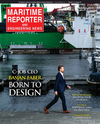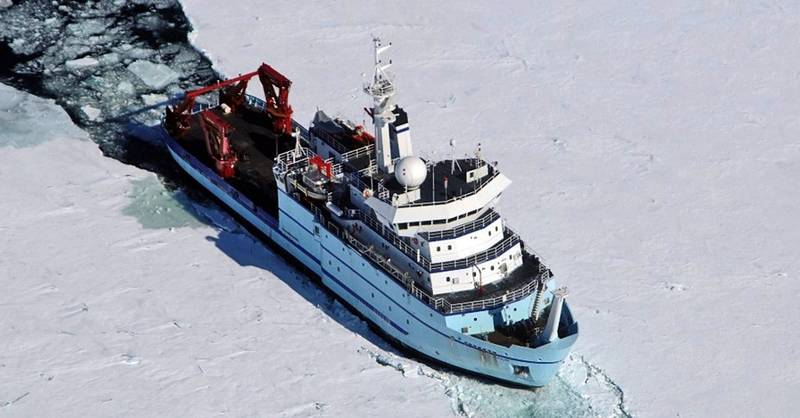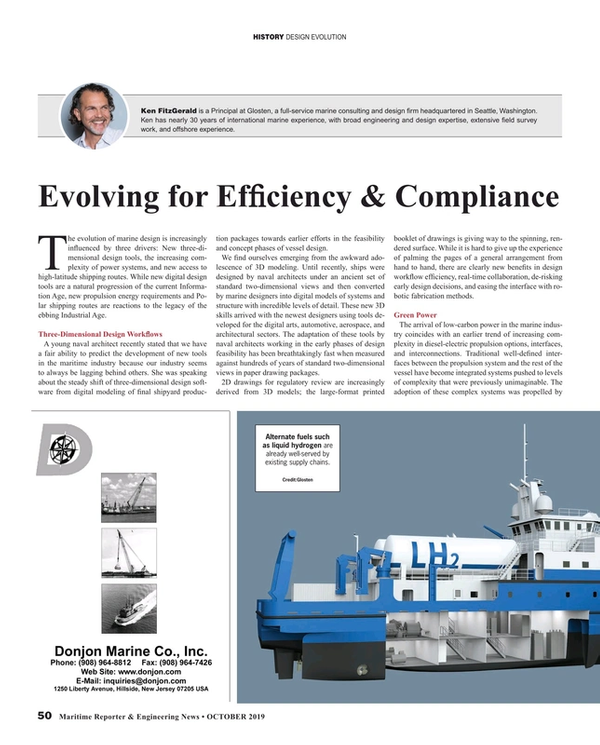
Ship Design: Evolving for Efficiency, Compliance
The evolution of marine design is increasingly influenced by three drivers: New three-dimensional design tools, the increasing complexity of power systems, and new access to high-latitude shipping routes. While new digital design tools are a natural progression of the current Information Age, new propulsion energy requirements and Polar shipping routes are reactions to the legacy of the ebbing Industrial Age.
Three-Dimensional Design Workflows
A young naval architect recently stated that we have a fair ability to predict the development of new tools in the maritime industry because our industry seems to always be lagging behind others. She was speaking about the steady shift of three-dimensional design software from digital modeling of final shipyard production packages towards earlier efforts in the feasibility and concept phases of vessel design.
We find ourselves emerging from the awkward adolescence of 3D modeling. Until recently, ships were designed by naval architects under an ancient set of standard two-dimensional views and then converted by marine designers into digital models of systems and structure with incredible levels of detail. These new 3D skills arrived with the newest designers using tools developed for the digital arts, automotive, aerospace, and architectural sectors. The adaptation of these tools by naval architects working in the early phases of design feasibility has been breathtakingly fast when measured against hundreds of years of standard two-dimensional views in paper drawing packages.
2D drawings for regulatory review are increasingly derived from 3D models; the large-format printed booklet of drawings is giving way to the spinning, rendered surface. While it is hard to give up the experience of palming the pages of a general arrangement from hand to hand, there are clearly new benefits in design workflow efficiency, real-time collaboration, de-risking early design decisions, and easing the interface with robotic fabrication methods.
Green Power
The arrival of low-carbon power in the marine industry coincides with an earlier trend of increasing complexity in diesel-electric propulsion options, interfaces, and interconnections. Traditional well-defined interfaces between the propulsion system and the rest of the vessel have become integrated systems pushed to levels of complexity that were previously unimaginable. The adoption of these complex systems was propelled by many requirements including reduced tug handling, dynamic positioning, competitive fuel efficiency, and increased safety in design codes.
The height of the current diesel-electric age has been a period of hard lessons in systems integration. Without systems-wide optimization and interface control, vessel projects with multiple interconnected electrical and data systems from an army of siloed vendors become fractured battlefields. Many owners, shipyards, designers, and vendors have been unprepared for this new age of systems complexity while operating in a commercial shipbuilding model from a simpler time. This has bred a new sub-discipline of marine engineering. Marine electrical systems designers are tasked with optimizing the entire electrical and control system to develop clear interface requirements.
New initiatives for carbon reductions and efficiency improvements have added even more complexity to the systems of the near-future and have led to a blossoming field of renewable power concepts. The outlook of the marine power generation landscape includes a wide set of options ranging across hydrocarbons, renewable electricity, hydrogen, ammonia, and wind. Each of these options carries an intimidating set of new systems and interconnections for controls, alarms, and automation that will need to be optimized.
Polar Shipping
Increased access to Arctic shipping routes is illuminating a need for new navigational tools, infrastructure, and vessel designs to close operational gaps and meet environmental requirements. Current ice forecasting and voyage planning methods are frozen in a venerable system that was intended for a limited number of vessels active in ice impacted waters. Advanced methods and new technologies will be required for widespread commercial application in new northern routes. New Polar environmental regulations together with existing requirements will require additional engineering and vendor capacity as maritime activity in Polar waters increases.
 Developing new ice navigation tools is an investment comittment rather than a technical challenge. Credit: Glosten
Developing new ice navigation tools is an investment comittment rather than a technical challenge. Credit: Glosten
Vessel operations in and near ice-covered waters add new daily burdens to vessel crews operating in high latitudes. Many of these new requirements are focused on estimating real-time and near-future ice conditions in the immediate areas of operations and along navigational routes. In the simplest terms, ice navigation can be thought of as coastal navigation with an ever-changing and ever-moving coastline. In an age where most risks have been mitigated by digital information, the timeless practice of watch-stander vigilance is still the primary tool for ice navigation. Site-specific ice predictions covering the immediate vessel environment over an hours-to-days interval is currently within technical reach by combining real-time metocean data with high definition digital models. The commercial adoption of these tools by further development and packaging is a dawning challenge for active weather routing and voyage planning service providers.
Search and Rescue (SAR), salvage, and spill response in Polar waters is another risk management gap for shipping in high latitudes. New methods and standardized monitoring and response practices are required to manage marine casualty risks and normalize commercial terms for Polar water operations.
New and unfamiliar environmental requirements for vessels operating in Polar waters will be increasingly implemented in newbuild and modification design packages to provide vessels with the flexibility for work in high latitudes. Designs and treatments to reduce underwater radiated noise are already under consideration for existing harbors and high-concentration shipping corridors. Vessels designated for Polar routes and operations will need new levels of specialized design to minimize vessel noise impacts in the Arctic habitats of protected marine mammals. Similarly, new systems and engineering should be expected to provide compliance for reduced vessel emissions. Zero discharge zones are an existing driver of such treatment systems. Black carbon emission controls for main engine and auxiliary systems are another likely area for engineering evolution in high latitude vessel design.
New Methods, New Responsibilities
It is the nature of designers, engineers, and builders to see themselves as innovators who are bringing disruptive and exciting new solutions to their technology sectors; digital tools are changing marine design just as the propeller disrupted the paddle wheel. While these are exciting and positive tends building on the exponential trajectory of earlier technology leaps, we also have new challenges which come with the aging of all things. In 2019, these are the challenges of maintaining environmental health and adapting to unintentional changes from our earlier industrial lifestyle.
About the Author
Ken FitzGerald is a Principal at Glosten, a full-service marine consulting and design firm headquartered in Seattle, Washington. Ken has nearly 30 years of international marine experience, with broad engineering and design expertise, extensive field survey work, and offshore experience. He supports the firm’s work in ocean science, geophysical surveys, offshore renewables, mooring design, and marine logistics. Prior to joining Glosten, Ken worked as a field oceanographer and marine technician for the fabrication and deployment of inshore oceanographic platforms, offshore moorings, and towed systems.
 Ken FitzGerald. Credit: Glosten
Ken FitzGerald. Credit: Glosten
Read Ship Design: Evolving for Efficiency, Compliance in Pdf, Flash or Html5 edition of October 2019 Maritime Reporter
Other stories from October 2019 issue
Content
- Containership Fires page: 16
- Interview: Nigel Shewring R&D Director, Hempel page: 24
- Maritime History & the Panama Canal page: 26
- C-Job CEO Basjan Faber was Born to Design page: 34
- Gibbs & Cox: Historic Ship Designer Turns 90 page: 40
- Ship Design & The Inevitability of Change page: 46
- Ship Design: Evolving for Efficiency, Compliance page: 50
- Robert Allan Ltd.: The Evolution of Marine Design page: 52
- Interview: Cory Wood, VP, Bristol Harbor Group page: 54
- Maritime 2050: Facing the Decarbonization Challenge page: 58
- ABS & the Future of Classification page: 60


